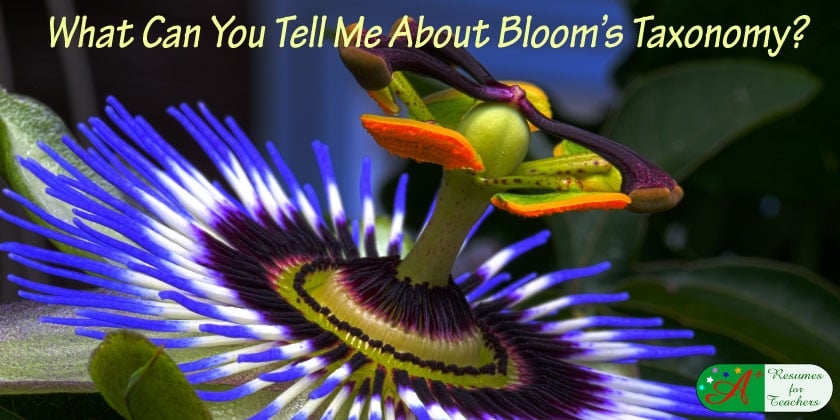What can you tell me about Bloom’s Taxonomy?
During your teacher job interview, you will be expected to understand whatever teaching strategies, learning activities, or techniques that the panel may ask you to explain and comment on each question knowledgeably. This is why it is critical to review teaching terms, which can be called education buzzwords, before going to a teacher job interview. It is important to prove to the hiring committee that you are up-to-date with the latest education lingo, industry trends, teaching strategies, etc.
You may have heard the term Bloom’s Taxonomy, but maybe you never thought about what you would say if someone asked you to describe what it is or your thoughts on the subject. You may as well take care of that right now before being stumped in a teacher job interview by reading about it now. Here goes!
Bloom had the belief that education should focus on the mastery of subjects and the promotion of higher forms of thinking rather than the transfer of simple facts. He created a framework of simple checklists to ensure that one utilizes the most appropriate type of learning methods to achieve an academic goal.
Blooms’ Taxonomy uses the “Knowledge, Attitude, and Skills” structure of learning and evaluation and is the most widely used teaching method today. It provides a simple, clear, and effective teaching model for explaining and applying learning objectives, teaching methods, and the measurement of learning outcomes. This model serves as a teacher’s checklist to ensure that your teaching is successfully planned to deliver material to students to optimize learning.
The well-known taxonomy of learning objectives is an attempt (within the behavioral paradigm) to classify forms and learning levels. It identifies three “domains” of learning, organized as a series of levels or pre-requisites. It is suggested that one cannot adequately address higher levels until those below them have been covered, making it serial in structure. As well as providing a basic sequential model for dealing with topics in the curriculum, it also suggests a way of categorizing levels of learning. Categorizing would be regarding the expected ceiling for a given program or grade level.
Bloom’s model is divided into three domains:
1. Cognitive (intellectual – knowledge) – the most used of the domains, refers to knowledge structures. It can be viewed as a sequence of progressive contextualization of the material.
2. Affective (feelings, emotions, and behavior) – the affective domain is concerned with values, or more precisely perhaps with the perception of value issues, and ranges from mere awareness to distinguish implicit values through analysis.
3. Psychomotor (manual and physical skills) – Bloom never completed work on this domain. There have been several attempts to achieve it. It draws attention to the fundamental role of imitation in skill acquisition.
Ultimately, with Bloom’s Taxonomy, the learner should benefit from the development of knowledge and intellect, attitude and beliefs, and the ability to put physical and bodily skills into effect. The Taxonomy goal is to motivate educators to focus on all three domains, creating a more holistic form of education.
Learn other job interview questions you could be asked in a teacher job interview and potential responses.
What can you tell me about Bloom’s Taxonomy? Please comment below on how you would answer this question in a job interview.


